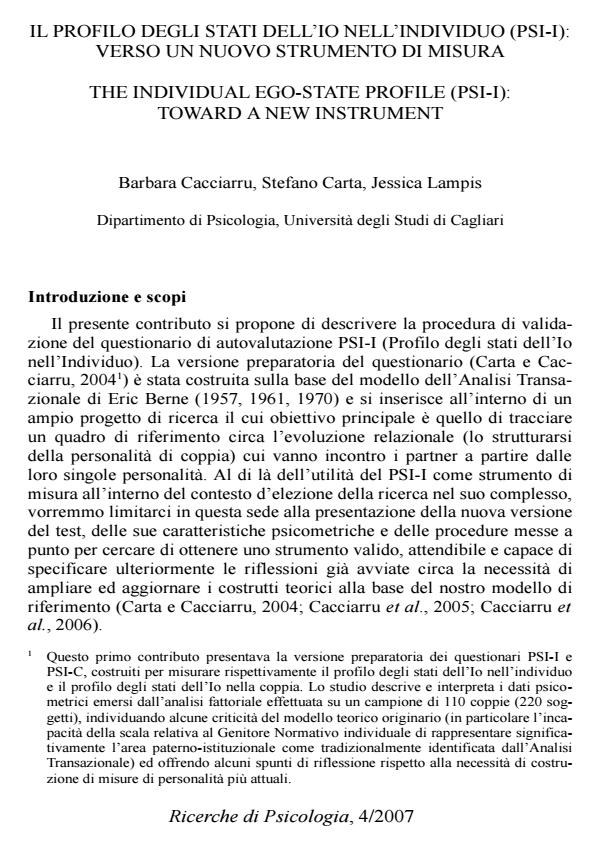Il profilo degli stati dell'io nell'individuo (psi-i): verso un nuovo strumento di misura
Titolo Rivista RICERCHE DI PSICOLOGIA
Autori/Curatori Barbara Cacciarru, Stefano Carta, Jessica Lampis
Anno di pubblicazione 2008 Fascicolo 2007/4
Lingua Italiano Numero pagine 23 P. 127-149 Dimensione file 392 KB
DOI
Il DOI è il codice a barre della proprietà intellettuale: per saperne di più
clicca qui
Qui sotto puoi vedere in anteprima la prima pagina di questo articolo.
Se questo articolo ti interessa, lo puoi acquistare (e scaricare in formato pdf) seguendo le facili indicazioni per acquistare il download credit. Acquista Download Credits per scaricare questo Articolo in formato PDF

FrancoAngeli è membro della Publishers International Linking Association, Inc (PILA)associazione indipendente e non profit per facilitare (attraverso i servizi tecnologici implementati da CrossRef.org) l’accesso degli studiosi ai contenuti digitali nelle pubblicazioni professionali e scientifiche
Il profilo degli stati dell'io nell'individuo (psi-i): verso un nuovo strumento di misuraThe authors describe the validation procedure of the PSI-I Questionnaire on the Ego-states, based on E. Berne’s transactional model (Carta e Cacciarru, 2004). The items of the PSI-I that were found in the previous study have been reelaborated, submitted to a sample of 1128 italian subjects, and subsequently analyzed using factor analysis with the method of principal components, by extracting 5 components for each of the 5 hypothesized scales. The validity, internal consistency of the scales, and correlations coefficients have been also verified, together with an analysis of the influence of social desiderability on the answers to the questionnaire. The psychometric qualities of the PSI-I demonstrate its ability to discriminate the energetic charge of each of the 5 ego-states in the individual, i.e. the ways by which the subjects represent themselves in relation to their approximation to each ego-state in everyday life
Barbara Cacciarru, Stefano Carta, Jessica Lampis, Il profilo degli stati dell'io nell'individuo (psi-i): verso un nuovo strumento di misura in "RICERCHE DI PSICOLOGIA " 4/2007, pp 127-149, DOI: